London burned for 4 days, from Sunday 2nd Sept to Wednesday 5th of September 1966 and burnt out the ancient city of London. Burning 14000 houses, 100 churches and a huge number of public buildings making 70,000 inhabitants homeless. While only six deaths were reported, this made a huge impact in the Londoners' minds and hearts.

See the range of the fire in the above diagram. To commemorate this Great Fire, a great monument was created near the northern end of the London Bridge (see above map) at Pudding Lane. See the full slide show here and here is a good history of this monument.
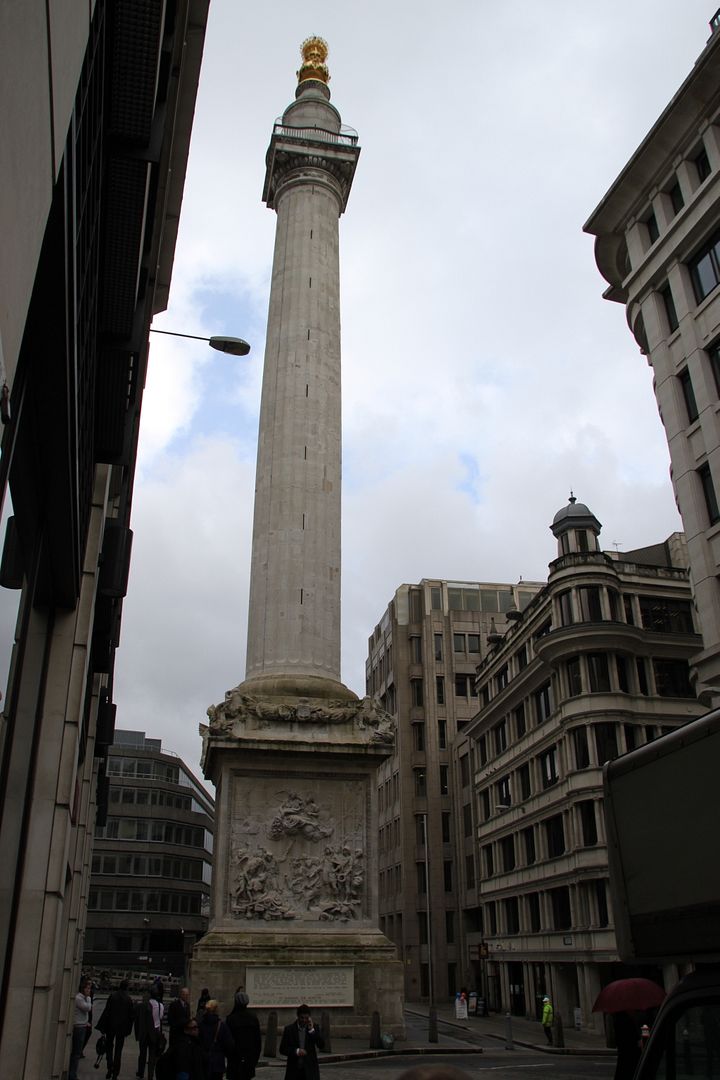
The height of the monument is 202 feet, the exact distance from where the monument stands to the baker’s shop where the fire began in Pudding Lane.
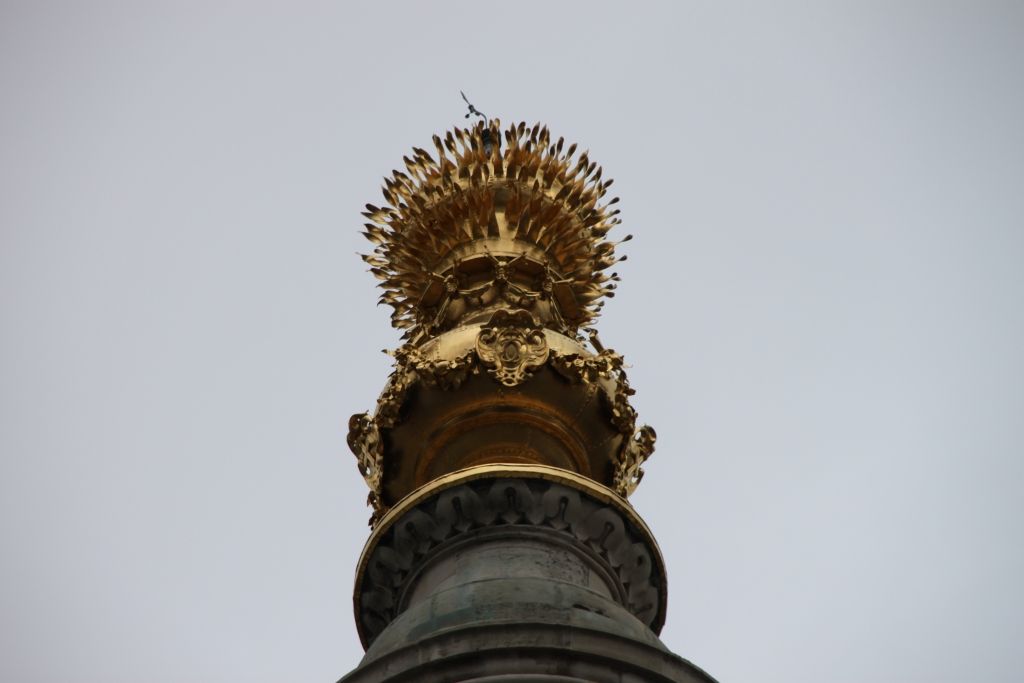
The top of the monument is supposed to be a gilded urn of fire, designed by Christopher Wren and Robert Hooke.

There is a square walkway around the base of the urn where people can walk around and admire the wonders of London after climbing the 311 steps. I wouldn't climb that, not with my gammy knee. You can see the slots on the column which provide thin windows into the staircase.
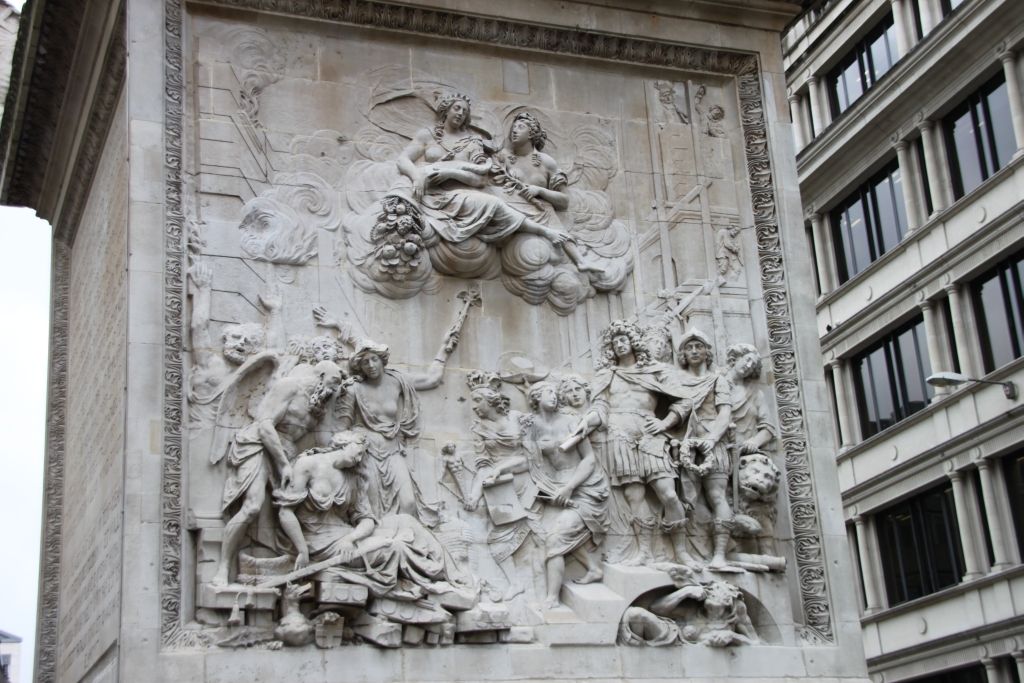
This is a sculpture by Caius Cibber. On the left is London, in the form of a woman, who is sitting on ruins. Time with its wings, is helping her up, while another female behind her is pointing to two figures on the top, Plenty and Peace. In other words, London will be repaired via Plenty and Peace and time will raise her up to her former glory. , showing King Charles II and his brother James on the right, surrounded by Liberty, Architecture and Science giving guidance on how to restore London, both are standing on Envy who is gnawing on a heart. Its quite a nice allegorical sculpture. And to think it has survived so many centuries.


North Panel: How the fire started, damage and how it was put out, in Latin and English in the lower metal plaque

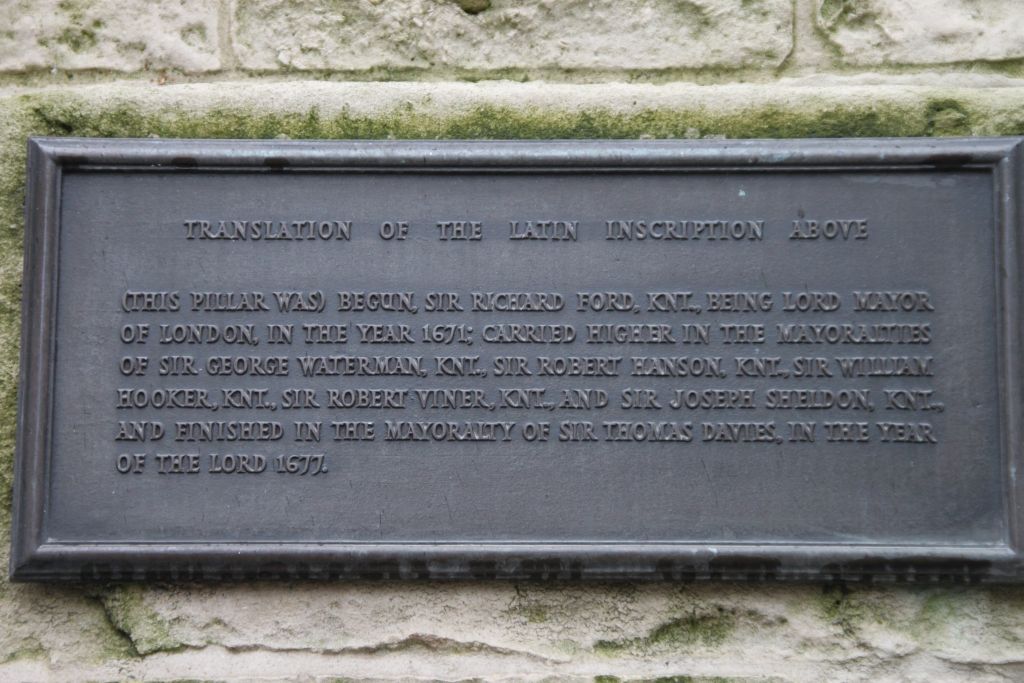
East Panel: Which London Mayor helped to start the monument, construct and complete the monument
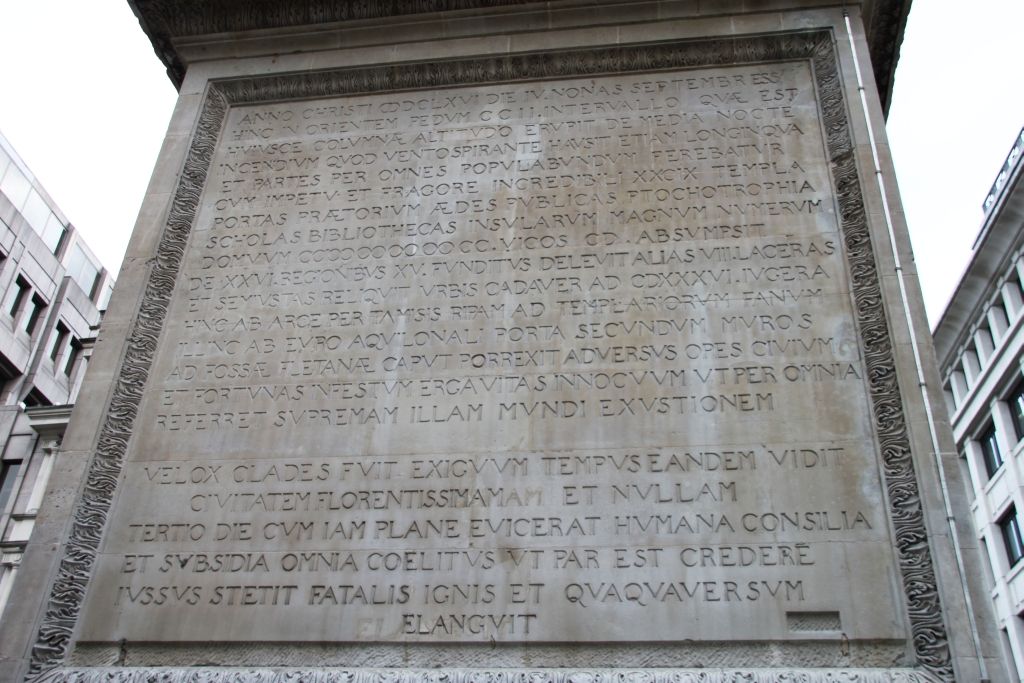

South Panel: This Latin inscription talks about what Charles II did after the fire to reconstruct.
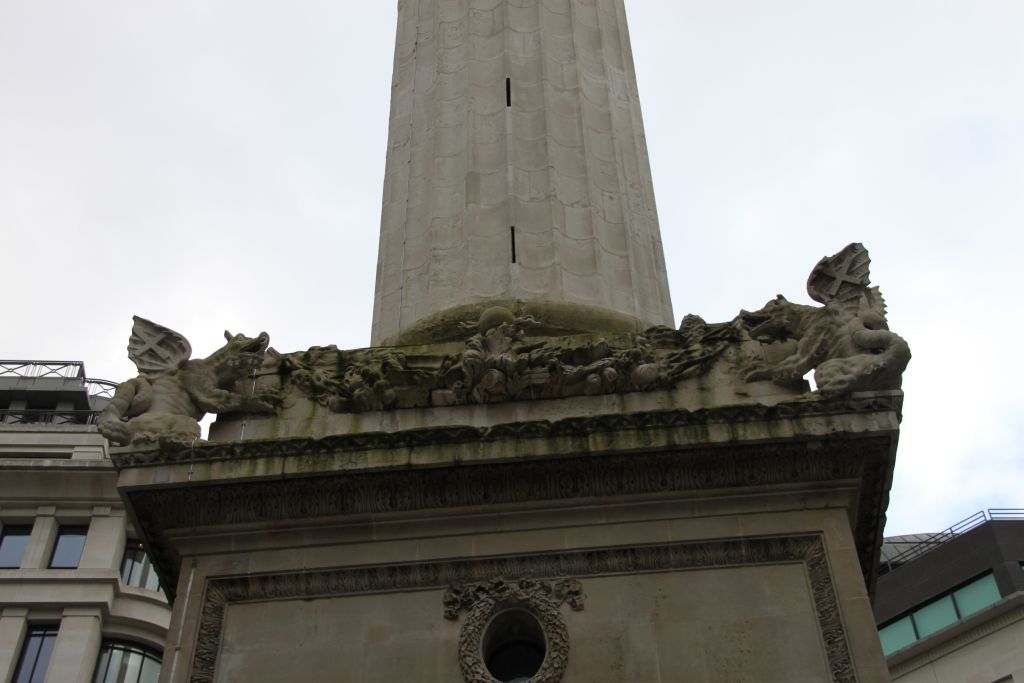
Some dragons on the roof.
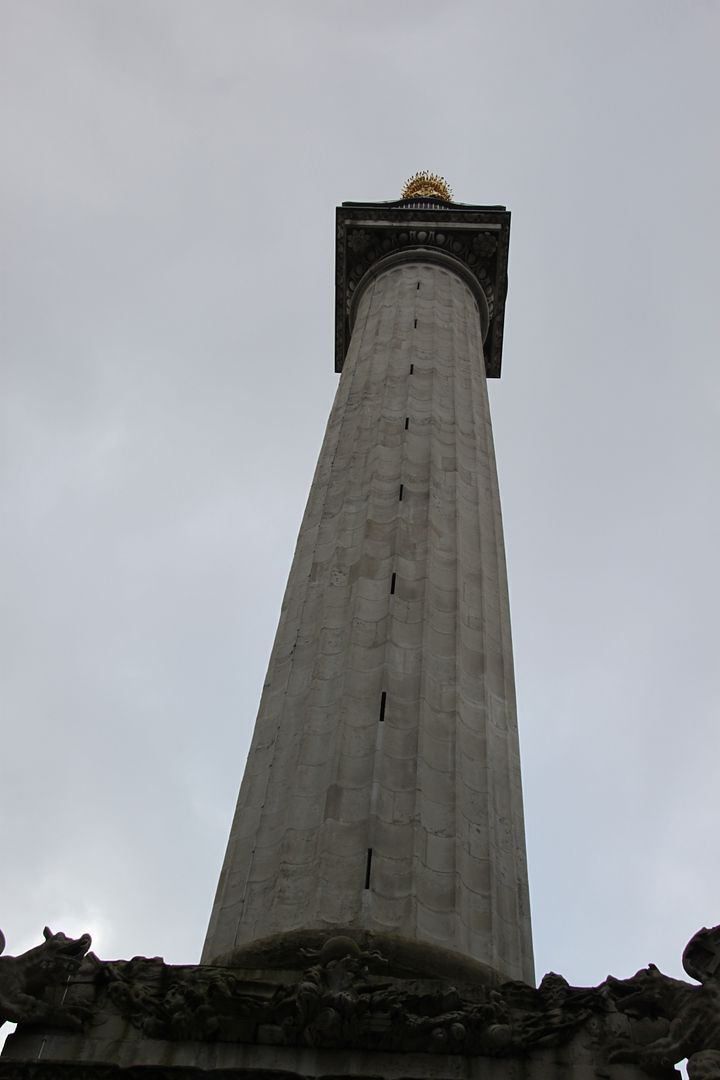
Makes you feel a bit tiny, no?

Some tourists heading up the monument, well, best of luck to them, pay £3 and then climb? For that money, i want an elevator at the least.
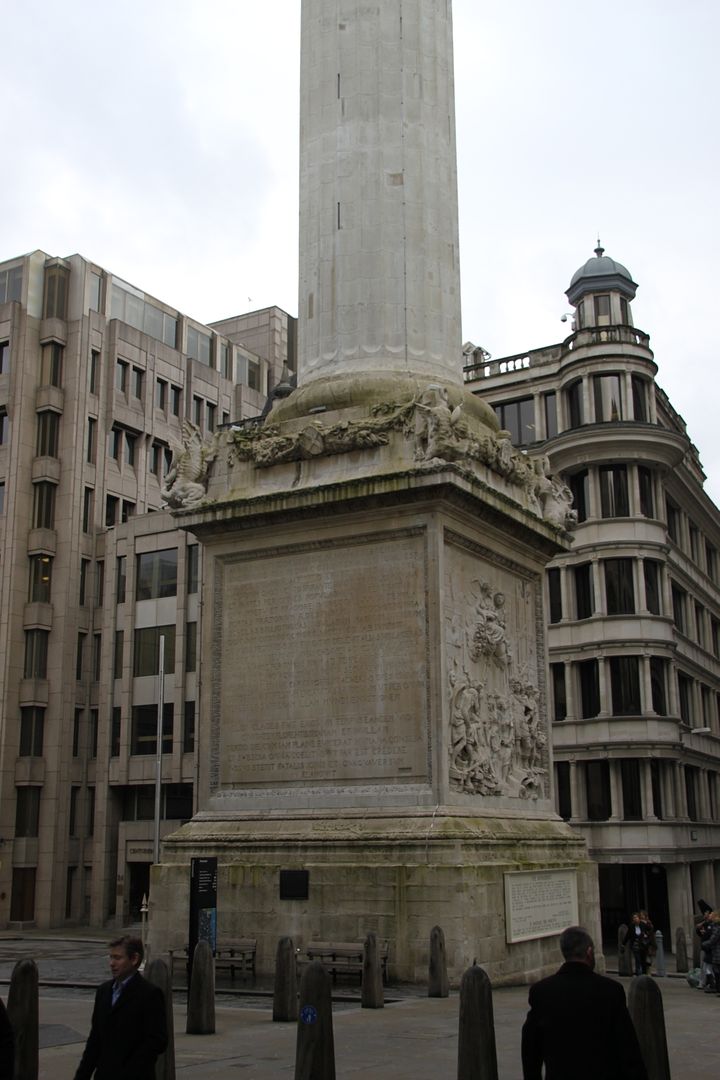
Another view of the monument base from the Monument Tube Station. It is quite extraordinary to see this structure, one has to admit. Its now 344 years since the Great Fire, and very few people remember it. Looking around the architecture of London, you wont see many signs because since the Great Fire, lots of other events such as the London Bombing of WW2, then the loads of constant development in London, all have wiped out all traces of the Great Fire except in the Museum of London, some small plaques here and there and in some old dusty history books. And this whacking great monument. It does not talk to me, there are no referential points, this Portland stone building is strangely bereft of its surroundings and a context. Tourists read the text and wander off, it doesnt touch them. With one set of exceptions, Japanese Tourists. They make it a point to come here and see this. Japanese are frightened of fire and with their houses of wood and paper, its very dangerous. Japanese history is replete with city wide fires, so they can appreciate this. But not many more.
One also forgets what happened to the Catholics after the fire. A mentally deficient man confessed to starting the fire, he was convicted and then hanged on 28th September 1666, just three weeks after the fire. Quite a lot of people blamed the Catholics and it was so bad that, and I quote from Wikipedia:
In 1668 accusations against the Catholics were added to the inscription on the Monument which read, in part:
“Here by permission of heaven, hell broke loose upon this Protestant city.....the most dreadful Burning of this City; begun and carried on by the treachery and malice of the Popish faction...Popish frenzy which wrought such horrors, is not yet quenched...
This was then chiselled off only in 1831, a full one hundred and sixty five years later. Just gives you an idea how long anti Catholic sentiment lasted. While reading and researching this, I was just struck by the reactions (or rather the lack of it) after the London Bombings of 7/7. We did not see any kind of islamophobic reaction post 7/7, but the rise of the BNP gives rise to my concern that perhaps a similar thing might indeed happen. Anyway, the monument thus stands also as a monument to racial co-existence, of falsely blaming an entire community for accidents or the actions of one/few. Would be good to learn it more and let others know more about this.

2 comments:
Very interesting, Bhaskar. I hadn't realised it was a monument to the Great Fire, nor the anti-catholic sentiment involved. I did enjoy the typo in the first line though - so its not a monument to the Jules Rimet trophy?
heh, no, dont think Jules Rimet will have anything to do with this..
Post a Comment